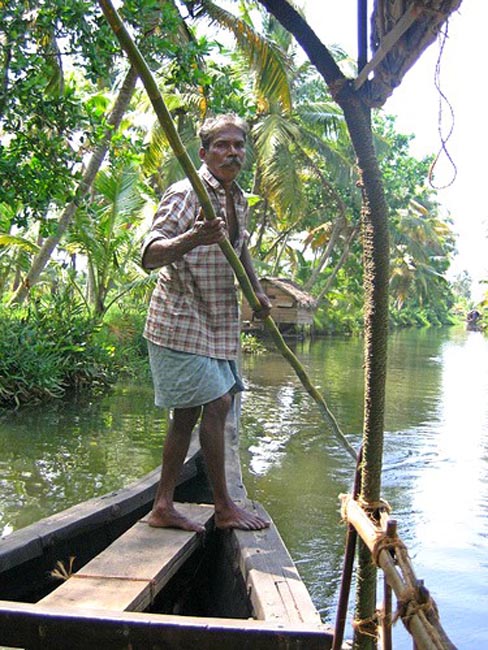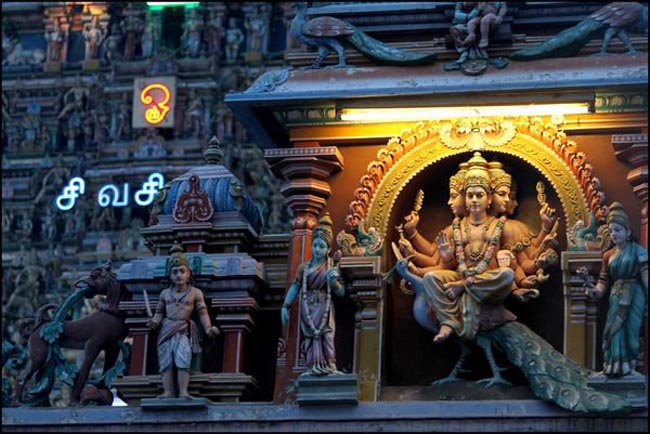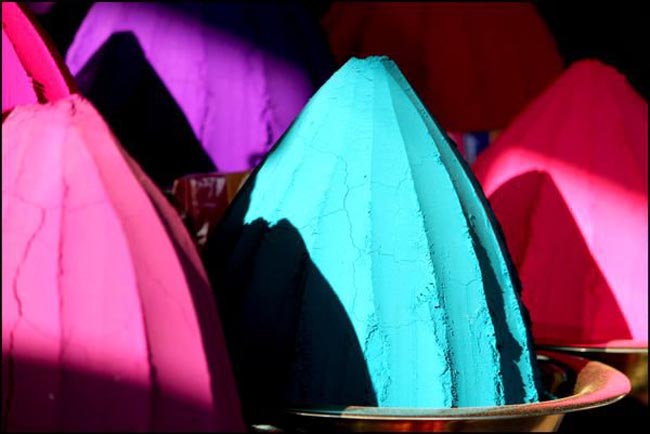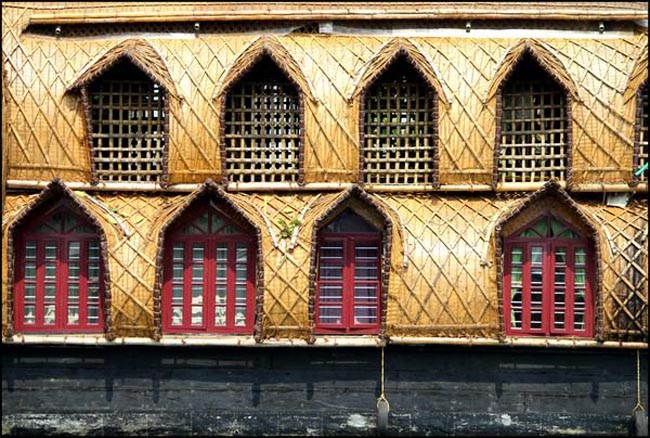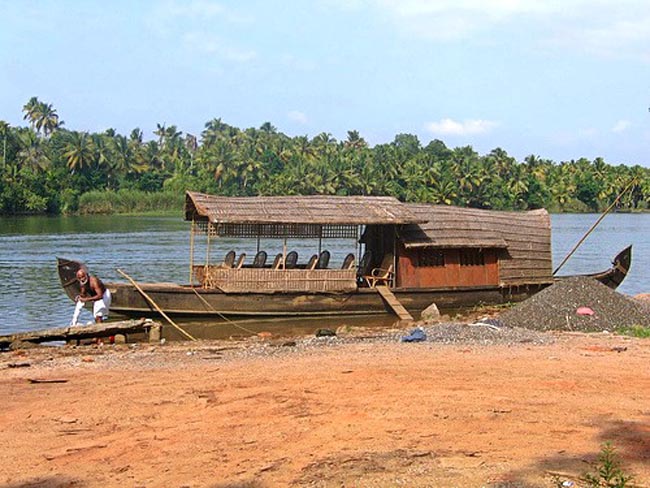Prices below are per person, twin-sharing costs in US Dollars (USD). Pricing does not include airfare to/from the tour and any applicable taxes. For single supplement rates and taxes (if any), please refer to below Prices & Dates table. For general information on flights to/from the tour, click here.
Your Travel and Accomodations Arranged For You
(With English Speaking Guides and Staff.)
Driver, Dinner, and Local Guide Tips Included.
Authentic Local Experiences With Lots Of Inclusions.
Select a date below to reserve your spot:
The above prices are subject to an additional $138 for taxes/fees levied on flights that occur as part of the tour. The internal airfares ARE included (any exceptions are listed in red below), but we list the taxes separately on your invoice as they are beyond our control and can change at any time.
$1000 DEPOSIT REQUIRED due to the nature of the internal flights that need to be booked/paid for far in advance. Because these tickets are non-refundable once issued, contrary to our usual terms and conditions governing deposits, once the tour is 'guaranteed' all monies become 100% non-refundable, non-transferrable.
Optional Single Supplement: $1240 USD (number of singles limited).
This tour may require a mandatory single supplement charge of $620 if you join our share program and we are unable to pair you.
Download Itinerary
Day 1 Arrive in Goa
Today we arrive in the former Portuguese enclave of Goa.
Goa achieved fame when Portuguese navigator Vasco da Gama sailed down the Malabar Coast in 1498 in search of "Christians and spices." Although he found neither, Goa became a Portuguese colony separated from the rest of India by the jungle covered hills of the Western Ghats. Goa's heartland and population is located in the alluvial strip inland from the beaches, a lush patchwork of paddy fields, coconut plantations, whitewashed churches and gently meandering rivers.
Overnight in Goa.
Included Meal(s): Dinner
Day 2 Goa Area Touring
Goa is a tiny part of India on the west coast. This small state is one of India's most popular attractions -- a land of more than 26 wonderful beaches, natural springs known for their medicinal powers, green hills, a huge collection of historic temples and churches, lush fields of vegetables and grains, plus kind hearted and very hospitable people with a rich cultural milieu.
This morning we include a sightseeing tour of Panjim. a former fishing village made the capital of Goa by a decree from Lisbon. It is spread around Altinho, a residential area with Portuguese style bungalows. The dominant structure is the Patriarch's Palace with the statue of Christ the King on its lawns. Altinho offers a panoramic view of the city from its summit. The Idalcao (Adil Shah's palace), built in 1490, is the oldest monument in Panjim. The Goan capital has a different feel from any other Indian city. Stacked around the side of lush terraced hillsides at the mouth of the Mandovi River, its skyline of sloping red-tiled roofs, whitewashed churches and concrete apartment blocks, the essence of the city, purely based on Portuguese architectural style, is distinctively seen all around.
Visit the historic neighbourhood of Fontainhas, known as the Latin Quarter. Discover the area's Portuguese influences as you walk down narrow streets and past old, colourful villas. Pause at the small St Sebastian Chapel to view several statues of historical figures including the Roman Catholic monk Abade Faria. Known as the Church Square which is located in the heart of the city is Panjim's most photogenic landmark -- the Church of Our Lady of Immaculate Conception.
Our tour also takes us to Old Goa, the heartland of Asian Christianity, once a bustling metropolis but is now in ruins. Old Goa, called “Rome of the East,” bounds in churches and chapels, some dating back to the 16th century. The profusion and architectural excellence of churches include superb examples of late renaissance, early baroque, Manueline and Gothic. Visit some of the most popular and the best-known churches and cathedrals in Old Goa.
At some point in our day, we’ll enjoy lunch at Sahakari Spice Farm, an award -inning spice plantation set amidst lush green surroundings. A guide takes us around the farm, explaining the usefulness of the spices, tropical fruits, herbs and roots grown here, such as cashew, Areca nut (betel nut), and tropical fruit like star fruit, jackfruit, custard apple, banana, papaya and pineapple. After the tour, we are served an exquisite Goan lunch in traditional style.
Balance of the day at leisure to enjoy this laid-back town.
Overnight in Goa.
Included Meal(s): Breakfast, Lunch and Dinner
Not finding what you're looking for?
Our specialists can take away the stress and create a private custom tour tailored to your exact interests and budget.
Day 3 Goa: Heritage Tour
This morning we visit several sleepy villages, stepping back in time to get a glimpse of the historic remnants of the Portuguese era.
Our first stop is the little village of Loutolim. Built in 1590, it pre-dates the Taj Mahal by decades. It was designed by Jesuit priests from nearby Rachol Seminary to accommodate a newly-converted Goan family -- the Podiars, who took the name Figueiredo. The house's sumptuous interior stands in studied contrast to the natural beauty of the paddy fields and coconut trees that surround it. In the 18th century, with the family's rise in power, the house was suitably augmented to achieve its current proportions.
We continue to the village of Chador to visit another heritage mansion, the Menzes Braganza Mansion, the biggest Portuguese mansion of its kind in Goa. Built in the 17th century and stretching along one whole side of Chandor's village square, it is the best example of what Goa’s once-grand and glorious mansions have today become.
Finally, the Palácio do Deão, a 250 year old mansion built by a Portuguese nobleman, features some outstanding lush gardens, which have been known as the most beautiful pleasure gardens in Goa.
We enjoy a traditional lunch at Palácio do Deão, where you can savour Goan delicacies. Goan cuisine originated from its ancient Hindu roots, but was influenced by the 451 years of Portuguese colonialisation and the century of Muslim rule. As Goa is located in a tropical zone, the spices and flavours are intense.
The remainder of the day is yours to explore further, do some shopping, and/or enjoy one of the area's many beaches. Owing to the open-ended nature of our day and included lunch, we leave dinner to your own account today.
Overnight in Goa.
Included Meal(s): Breakfast and Lunch
Day 4 Goa - Badami
Today we travel by road to Badami, a full day's journey.
On arrival we visit Badami.* Sculpted out of solid rock, the temples are adorned with dwarfs, an 18-armed Shiva, a Nandi bull, Lord Vishnu and the goddess Durga. The famed Durga Temple represents the blending of southern and northern styles of architecture.
* Depending on our timing today, we may accomplish Badami sightseeing tomorrow morning.
Overnight in Badami.
Included Meal(s): Breakfast and Dinner
Day 5 Badami - Aihole - Patadakkal - Hospet
We travel by road to Hospet.
We make a stop at Aihole. The seventy temples at Aihole exemplify Hindu medieval art. The Durga temple with its pyramidal roof has some remarkable sculpture, and the Jain Meguti temple is composed of 630 small stone blocks.
We also visit Patadakkal, the place where the Chalukuan kings had their coronation ceremonies. The ceiling of the Papanath temple, built around 680 AD, has a carved smiling Shiva, appearing to bless with his outstretched palm from whatever direction he is viewed. The Virupaksha Temple is a curious figure -- an elephant on one side and a buffalo on the other.
Continue to Hospet.
Overnight in Hospet.
Included Meal(s): Breakfast and Dinner
Day 6 Hospet - Hampi - Hospet
After breakfast we depart for a day trip to Hampi, the seat of the famed Vijayanagara Empire, which was the capital of the largest empire in post-Mughal India, covering several states. Although in ruins today, this capital city once boasted riches known far beyond the shores of India. The ruins of Hampi of the 14th Century lies scattered in about 26 sq. km area, amidst giant boulders and vegetation. Protected by the tempestuous river Tungabhadra in the north and rocky granite ridges on the other three sides, the ruins silently narrate the story of grandeur splendour and fabulous wealth. The splendid remains of palaces and gateways of the broken city tell a tale of man's infinite talent and power of creativity together with his capacity for senseless destruction.
Return to Hospet.
Overnight in Hospet.
Included Meal(s): Breakfast and Dinner
Day 7 Hospet - Hassan
After an early breakfast, depart on the long (+/- 7 hours) but interesting drive through rural Karnataka to Hassan. Upon arrival check-in at the hotel.
Overnight in Hassan.
Included Meal(s): Breakfast and Dinner
Day 8 Hassan: Belur & Halebid
Today we visit Belur and Halebid.
Belur and Halebid were both capitals of The Medieval Hoysala kings who built the exquisitely carved temples in the 12th & 13th centuries. Belur is famous for it Hoysala architecture; its Temple of Lord Channakeshava is embellished with carving which has few equals in the world. It took 103 years to complete and you can see why. The facade of the temple is filled with intricate sculptures and friezes with no portion left blank: elephants, episodes from the epics, and
sensuous dancers.
Halebid was the seat of Hoysala Kingdom; its great Hoyaleswara Temple was built in the typical Hoysala style. The temple, dating back to the 12th century, is astounding for its wealth of sculptural details. The walls of the temple are covered with an endless variety of gods and goddesses, animals, birds and dancing girls. Yet no two facets of the temple are the same. This magnificent temple -- guarded by a Nandi Bull -- was never completed, despite 86 years of labour.
We return to Hassan.
Overnight in Hassan.
Included Meal(s): Breakfast and Dinner
Day 9 Hassan - Mysore
This morning we travel to Mysore, arriving around midday.
In the afternoon we explore Mysore, famous for its silk and sandalwood, as well as its numerous palaces, well laid out boulevards and beautiful parks. The Maharaja's Palace is the most impressive of Mysore's ochre-coloured buildings -- a modern edifice built in 1897, where the oriental decorative imagination runs wild. One of the largest palaces in India, it is a gigantic synthesis of Hindu and Muslim styles. The royal family's private chambers, including the impressive Durbar Hall, are open to the public. The Marriage Hall has life-like paintings of the Dassera procession and in the museum is the ruler's golden elephant throne, used during festivities. Chamundi Hill lies 10 km from Mysore and is named after Chanduswari, the consort of Lord Shiva and the patron goddess of the royal family of Mysore. On the way up is a colossal figure of Nandi, carved out of a single rock in 1659. The view from the top of the hill is superb.
Overnight in Mysore.
Included Meal(s): Breakfast and Dinner
Day 10 Mysore - Bangalore: City Tour
Today we travel by road to Bangalore, the cosmopolitan capital of Karnataka.
Bangalore is called the Garden City for it's delicate blossoms and greenery that impart a unique beauty to this lovely city. The weather is the city's best feature, with pleasant summers and bearable winters. Bangalore, which literally means the 'town of baked beans', was founded by Kempe Gowda, a chieftain of the Vijayanagar Empire, around the 16th century. He built four towers in four directions to specify its boundaries.
On arrival we tour Bangalore, visiting the Lal Bagh Botanical Gardens, which has a variety of old trees, fountains, lotus pools, terraces and an assortment of tropical herbs and subtropical herbs. We also see the government buildings.
Overnight in Bangalore.
Included Meal(s): Breakfast and Dinner
Day 11 Bangalore - Fly to Kochi: City Tour
Early this morning we fly to Kochi (Cochin).
The history of European involvement in Kochi, from the early sixteenth century onwards, is dominated by the aggression of, successively, the Portuguese, Dutch and British, competing in their desire to control the port and its lucrative spice trade. From 1800, the state of Cochin was part of the British Madras Presidency; from 1812 until Independence in 1947, its administration was made the responsibility of a series of diwans, or financial ministers. In the 1920s, the British expanded the port to make it suitable for modern ocean-going ships; extensive dredging created Willingdon Island, between Ernakulam and Fort Cochin.
On arrival we have a tour of Kochi, including: Chinese fishing Nets -- A legacy of one of the earliest visitors to the Malabar coast, these nets are unmistakable as one enters the harbour. Records show that they were first erected between AD 1350 and 1450. Constructed out of Teak wood and Bamboo poles, they work on the principle of balance. The best place to watch is from Vasco Da Gama square, a narrow promenade that parallels the beach with little stalls that serve fresh seafood, tender coconuts and so on.
Santa Cruz Basilica: Built by the Portuguese, the church was elevated to a Cathedral by the Pope Paul IV in 1558. Spared by the Dutch conqueror of Cochin who destroyed many Catholic buildings in 1663, it later fell into the hands of the British who demolished it when they took over Cochin in 1795. For almost 100 years there was no church on the site, until the Bishop Dom Gomez Vereira commissioned a new building in 1887.
Overnight in Kochi.
Included Meal(s): Breakfast and Dinner
Day 12 Kochi - Allaphuza: Houseboat
We continue by road to Alappuzha (Alleppey), known as the "Venice of the East", situated on Vembanad Lake, the longest in India. A maze of canals and a network of bridges give this busy commercial town its descriptive sobriquet. Alleppey is known for its coir, the retted fibre of the coconut husk and for black pepper.
Today we board our houseboat for a very special Kerala delight -- a slow boat through its forests and palm-shaded canals. We take a leisurely cruise on the beautiful backwaters, enjoying the magnificent scenery along the waterways and stopping to admire what history and religion have left along the way.
THE HOUSEBOAT will be approx 60 feet long and 13 feet wide in the middle. There are comfortable beds, and traditional lanterns, and air-conditioning. There will be a sundeck for daytime relaxation. The boats are made of local natural fibres that truly echo the villagers harmony with the natural surroundings. As your oarsman slowly and silently propels us along the backwaters, we will enjoy the magnificent scenery along the waterways. We will stop to view working villages and witness locals fishing, swimming, crafting, and bathing (most boats will have oarsman though some will be motorized with a silencer on the motor).
NOTE: Single cabins are NOT available on the houseboat. Single supplements reflect sharing for this one night.
Overnight houseboat cruise.
Included Meal(s): Breakfast, Lunch and Dinner
Day 13 Allaphuza - Fly to Chennai
Today we return to Kochi and fly to Chennai (Madras).
Chennai, the capital of Tamil Nadu, is, like Mumbai and Calcutta, a comparatively modern creation. It was founded by the British East India Company in 1639, on a narrow five-kilometre strip of land between the Cooum and Adyar rivers, a few kilometres north of the ancient Tamil port of Mylapore and the Portuguese settlement of San Thome, established in 1522. The British were repeatedly challenged by the French who, in 1746, destroyed much of the city.
Overnight in Chennai.
Included Meal(s): Breakfast and Dinner
Day 14 Chennai & Mahabalipuram
Today we travel to 60 km (37 mi) to Mahabalipuram (also known as Mamallapuram), the seaport of the ancient Palava dynasty of Kanci. The temples and carvings here date back to the 7th century. They stand out because of their simplicity and the fact that they also depict many scenes from the every-day life of every-day people. It is now recognized as the site of some of the greatest architectural and sculptural achievements in India.
After a comprehensive tour of the site and relaxing lunch break next to the Bay of Bengal we return to Chennai.
Overnight in Chennai.
Included Meal(s): Breakfast and Dinner
Day 15 Chennai: City Tour - Departure
Chennai, the capital of Tamil Nadu, is, like Mumbai and Calcutta, a comparatively modern creation. It was founded by the British East India Company in 1639, on a narrow five-kilometre strip of land between the Cooum and Adyar rivers, a few kilometres north of the ancient Tamil port of Mylapore and the Portuguese settlement of San Thome, established in 1522. The British were repeatedly challenged by the French who, in 1746, destroyed much of the city. Robert Clive ("Clive of India"), then a clerk, was taken prisoner, an experience said to have inspired him to become a campaigner. Clive was among the first to re-enter Chennai when it was retaken three years alter, and continued to use it as his base. Following this, fortifications were strengthened and the British survived a year-long French siege (1759), completing the work in 1783. By this time, however, Calcutta was in the ascendancy and Madras lost its national importance.
Our city sightseeing of Chennai includes a visit to the National Art Gallery and Museum, which has a selection of ancient paintings from almost all schools of art, as well as a section entirely devoted to modern art. We will visit Fort St George, once a stronghold of the British; St Mary's Church, the oldest Anglican church in India; the San Thome Cathedral where the remains of St Thomas the Apostle are believed to have been buried; the Mylapore Temple dedicated to Lord Shiva and the Light House which is the only one of its kind in the world to be located on top of a High Court. We drive along the Marina, the thirteen kilometre-long beach which, with its shining white sands, aqua blue sea and violet lights at night, is the pride of Chennai.
Departure from Chennai.
PLEASE NOTE: If you are booking your own air, please ensure that your flight departs AFTER 8 pm (or miss today's sightseeing tour).
BON VOYAGE!
Included Meal(s): Breakfast
Inclusions
Breakfast and dinner are included daily, one lunch. Evening meals on tour will be taken mostly at hotels. In India, most restaurants of an international standard are associated with hotels. In some locales we endeavour to break up the buffet dinners with a meal at a local restaurant but, overall, the imperatives of hygiene and quality dictate hotel meals.
All transport, accommodation, sightseeing and entrance fees are included for sites noted as 'visited' in the detailed itinerary. Gratuities for drivers, restaurant staff, porters, local guides. Airport transfers for land & air customers and for early arriving/ late departing land & air customers who book their extra hotel nights through us.
Exclusions
International airfare to/from the tour. Tour Leader gratuities, lunches, drinks, personal items (phone, laundry, etc), domestic and international (if applicable) air taxes, visa fees, and any excursions referenced as 'optional'. Airport transfers for Land Only customers. Optional trip cancellation insurance. Our post-reservation trip notes offer further guidance on shopping, not included meals, visas.
Seasonality and Weather
For most of the country, late October-March is (by far) the best time to visit. During those months, temperatures range from 65-95 F/19-37 C in the south. March-June is dry and exceedingly hot (85-110 F/30-44 C), and June-October is monsoon time (20-80 in/50-200 cm of rain will fall in one season). While conditions can vary widely, you must be prepared for some sticky heat.
Transport and Travel Conditions
Ground transport via private air-conditioned motor coach. Internal flights via scheduled carriers. The tour is not physically strenuous though it is busy; you must be prepared for some early starts, be steady on your feet, and be able to endure some heat and long days. We have numerous walking tours and visit several sites that are LARGE with steps and uneven surfaces. Porters are available at hotels but you must be able to manage with your baggage at airports.
Am I suitable for this tour? Please refer to our self-assessment form.
Activity Level: 1
No particular physical activity is involved other than town/city walks and short walks to dinners and sites of interest, some of which are large.
To learn more about the Activity levels, please visit our tour styles page.
Accommodation
Accommodation in air-conditioned 3-4 star hotels. Hotel properties are mostly modern and Western style. Some are older, heritage / character properties with simpler rooms and perhaps no elevators (and no "star" rating). Some properties have swimming pools. Single rooms are limited and possibly smaller than twins. Laundry services at most hotels for a modest cost. Porters are generally available (see 'Inclusions').
THE HOUSEBOAT will be approx 60 feet long and 13 feet wide in the middle. There are comfortable beds, and traditional lanterns, a sundeck for daytime relaxation. Some of the houseboats have the provision for air-conditioning, but most travellers do not care for the all-night gasoline engine noise required to run the units. Most people find that the peace and quiet, and comfort provided by a fan, are preferred. NOTE: Single cabins are NOT available on the houseboat. Single supplements reflect sharing for this one night.
Staff and Support
Tour Leader throughout, local drivers, local guides at various locations.
Group Size
10-18 plus Tour Leader
Tour Extensions
This tour is part of a series that can be upgraded to make for a longer trip. For more options, please refer to tour code/s:
Tour Overview Countries Visited: 1 Acivity Level: 1 Tour Style: Cultural
Regions visited: South Asia
Countries visited: India
*The red tour trail on the map does not represent the actual travel path.
The following is a list of sample hotels at some locations included on this tour. The hotels shown here are meant to provide a general sense of the standard of hotel we usually aim for; they are not necessarily confirmed for your chosen departure.





... as a Portuguese hamlet, with a Mediterranean influence, by world-renowned architect Charles Correa, Cidade de Goa, our beach resort in Goa, is a blend of luxury, warmth, and the laidback elegance of susegad. It embodies the heart of Goa, both in terms of location and vibe. One is welcomed by stunning views of the sea, manicured greens, and vibrant medleys of oranges, yellows, and blues.
















